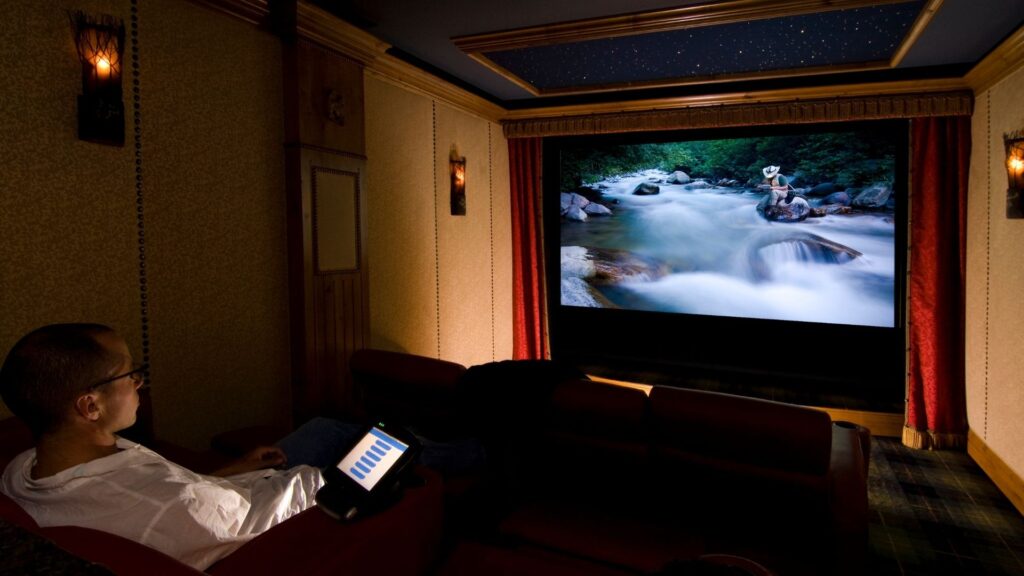
Don’t Settle for a Simple Movie Night. Have a Unique Cinematic Experience
The term “entertainment” can have various meanings depending on who you ask. It’s possible that movies are your go-to form of entertainment, and that you’re what we like to call a “movie buff”, a true movie fanatic. Movies have such a magnetic allure that they have captured the attention of virtually everyone on the planet. More than half of American internet users between the ages of 18 and 34 who participated in a national survey conducted in 2022 said they frequently or occasionally went to the movies.
It’s possible that, despite your deep affection for the silver screen, you rarely have the leisure to relax in a darkened theater with a bucket of popcorn. With today’s technology, however, you may re-create the setting without leaving the convenience of your own home.
The technical professionals who collaborate with Sirwiss make it easy to set up a home theater and enjoy a movie night with friends or family in the comfort of your own living room. Read on and find out everything you need to know to select and install the perfect home entertainment system.
How to Build a Home Theater: A Complete Guide
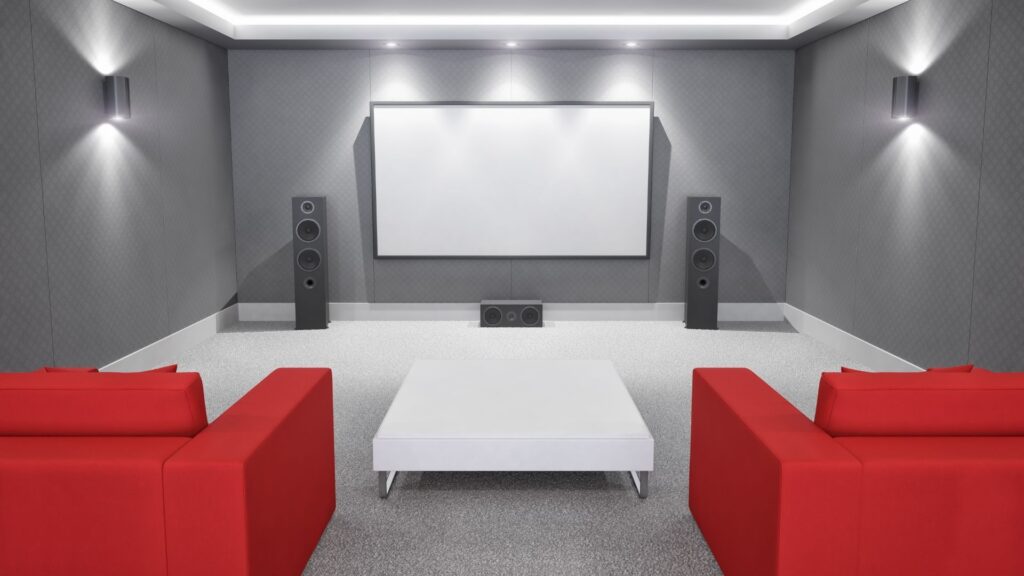
A home theater system is a fun and exciting way to upgrade your home and create the ideal environment for watching movies in complete comfort and style. Home theaters revolutionize the entertainment industry by allowing viewers to tailor their viewing experience to their specific tastes and requirements, whether they’re watching a movie, TV show, or documentary. They are a great way to bring the family closer together and provide thrilling entertainment for visitors.
Home theater systems have come down in price to the point where even if you wanted to, you could have one installed in your home. You may cut back on annual movie theater expenses by creating the home theater of your dreams at a fraction of the cost. Here you can find all the information you need to build the home theater of your dreams without breaking the bank.
What’s Good About Having a Home Theater
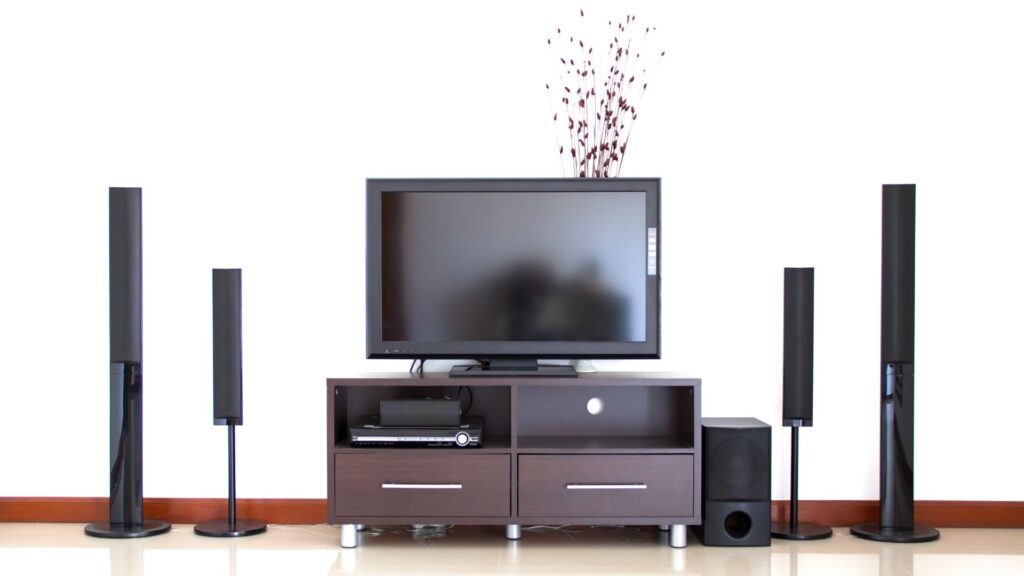
Despite impressing those around you, there are many wonderful advantages to having a home theater:
1. Control: When you have your own home theater, you have complete control of the entire movie-watching experience, from pausing the film to use the lavatory to adjusting the volume levels. 2. Stress Relief: Enjoy watching films in your home theater to relax, relieve tension, and temporarily escape the world without leaving your house.
3. Save Money: While there will be some upfront costs, you’ll save a ton of money on movie tickets and snacks over time.
4. Resale Value: If you ever plan to sell your home, a personal home movie theater may increase your property’s resale value and might also help you sell your home faster.
5. Sports: If you are an avid sports fan, there is nothing better than viewing the big game in your home theater.
6. Customization: From the décor to the furniture, you can personalize and customize your home movie theater however you see fit.
Designing Your Home Theater
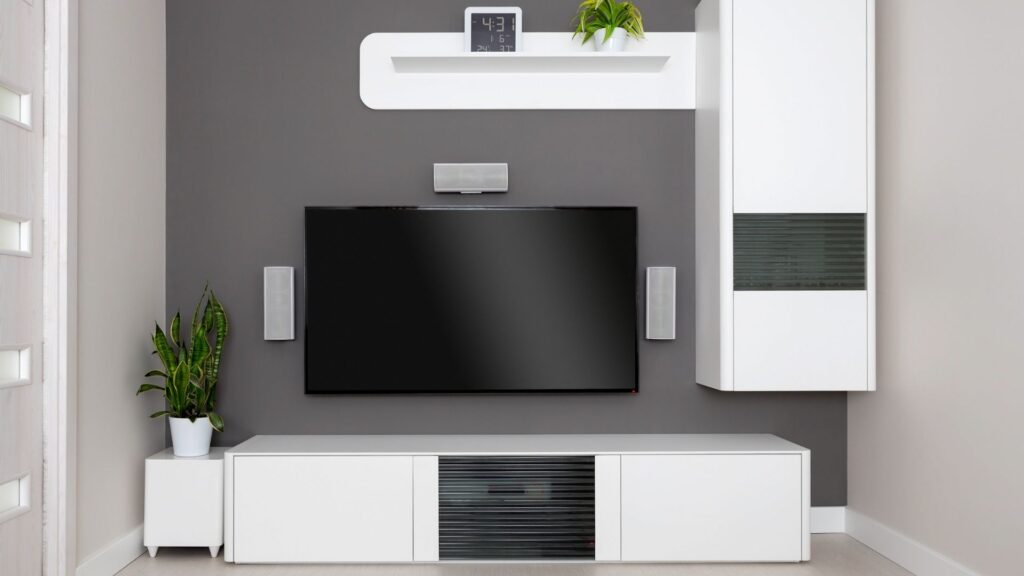
Planning is the first order of business when building a home theater. Planning makes everything go more smoothly and efficiently, but it’s tempting to rush headfirst into an interesting home project. To cut costs and keep things under control, this is a necessary action.
Location
The first step in creating a home theater is deciding where to place everything. There are several aspects to think about, with both advantages and disadvantages in every space. The most common rooms in the house for a home theater installation are as follows:
1. Living or family room: Depending on where it is in your home, your living or family room may be a wonderful alternative. If you have large windows that allow in a lot of natural light, it can ruin your movie-watching experience. If you have a dark living room or family room den, it could be great for a home theater setup.
2. Basement or Attic: Because natural light is less likely to enter the basement, it is a popular choice. It also adds some insulation for a better sound experience. For similar reasons, the attic works well as long as it is insulated and includes comfortable seating.
3. Underutilized Room: Converting an underutilized room into a home theater is a great way to utilize the space. Your home theater setup should have its own area. You may need to install some insulation in the room to prevent noise from other surrounding rooms from entering the theater space.
4. Garage: An empty garage, whether attached or detached, is an excellent choice for home theaters because it is easy to totally block off natural light and create a soundproofed environment. Because most garages are blank canvases, it’s simple to turn them into a theater environment that includes everything on your wish list.
Space requirements
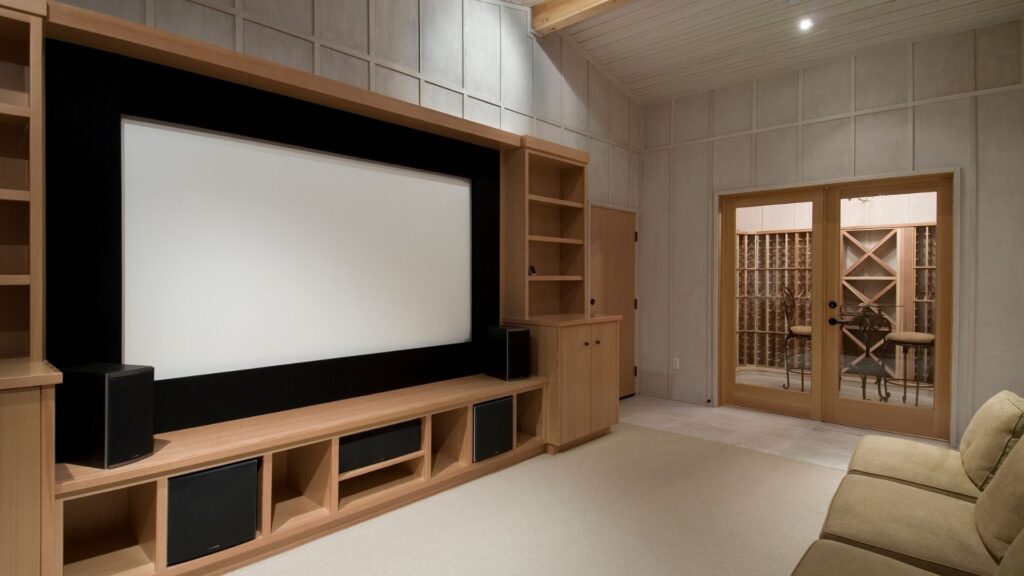
A handful of requirements are vital for setting up your home theater and can’t be ignored. Otherwise, you could end up facing costly repairs and installations. When planning on home theater, consider these requirements:
1. Size and Layout: Before you buy anything, you need to know how big your room is and how you’ll be able to set up your home theater equipment. For example, a short-throw projector is best for a small room, while a long-throw projector with at least seven feet between the projector and screen is best for a big room. Most of the time, a bigger screen is better, but it shouldn’t be bigger than what will fit in the room.
2. Access to Power Outlets: Clear the room and look at how your outlets are set up. Know what power strips and cord lengths you’ll need to get everything powered up safely and without making a mess of wires and cords. This will help you avoid stress on installation day.
3. Ventilation: If you seal your room with installation, soundproofing materials, and windows that block light, it’s even more important to have good airflow. Even if a room is sealed well, it can get hot, and if you have high-powered audio and video equipment, it will make a lot of heat. Don’t put anything in the way of air vents or returns; leave a clear path for air to flow freely.
4. Acoustics: In a home theater, sound is the most important thing. The room you use for your home theater should have good acoustics so that your sound system can sound its best. Wall-to-wall flooring and drapes help cut down on echo. Next, pick speakers that are the right size for your room. If the room is big and the speakers aren’t big enough, the sound won’t be good.
Choosing the Right Setup
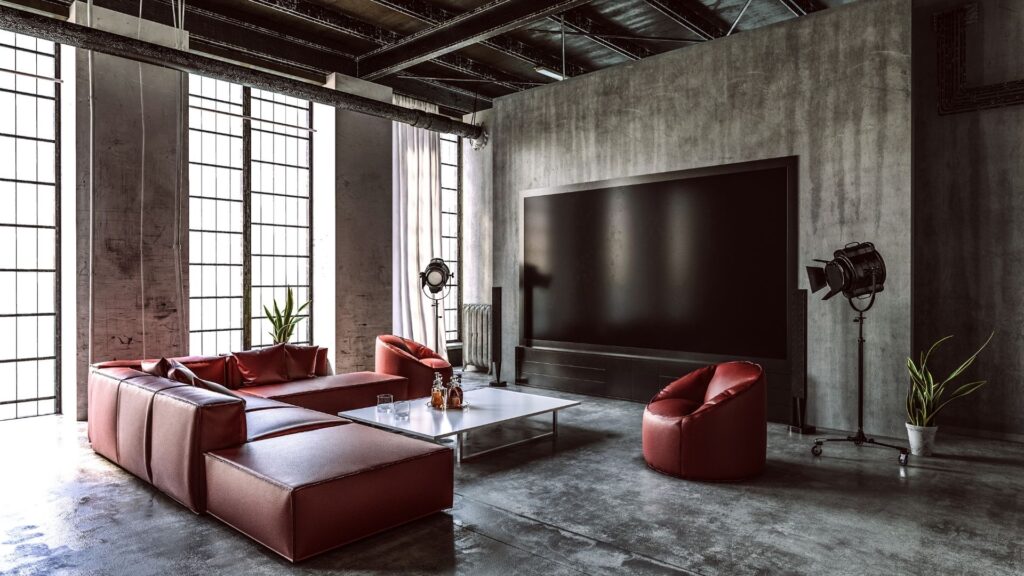
Display
A superb screen may elevate a standard home theater to the level of a true entertainment center. You will be able to recognize the visual elements of TV episodes and movies as the creators intended. Listed below are a few reasonably priced display choices.
1. Projectors: Home theater projectors call just a few extra pieces of equipment and the installation process. If you prefer film projection, a projector is the way to go, and setting up a screen is as simple as clearing some floor space. If you’re not planning on spending a lot on the rest of the set-up equipment, a new projector can be a good option despite its larger price tag.
2. Smart TV: Having a smart TV in your home theater is a terrific choice because of how simple it is to operate and how many useful functions it has. These days, you can get a big screen smart TV with built-in streaming services, picture upgrades, timers, and simple setup directions for less than the price of many brand-new projectors.
3. Refurbished or Used TV: These can be the ideal option for those on a tight budget who want a high-quality picture in their living room. Because TV technology evolves so quickly, there are plenty of excellent used TVs that are still state-of-the-art.
4. Computer Monitor: Affordable and packed with all the graphical bells and whistles you could want a computer monitor is a smart choice for home cinema setups. The ever-growing interest in PC gaming has resulted in the development of monitors with cutting-edge capabilities and a vivid display that are at home in any home theater.
Sound System
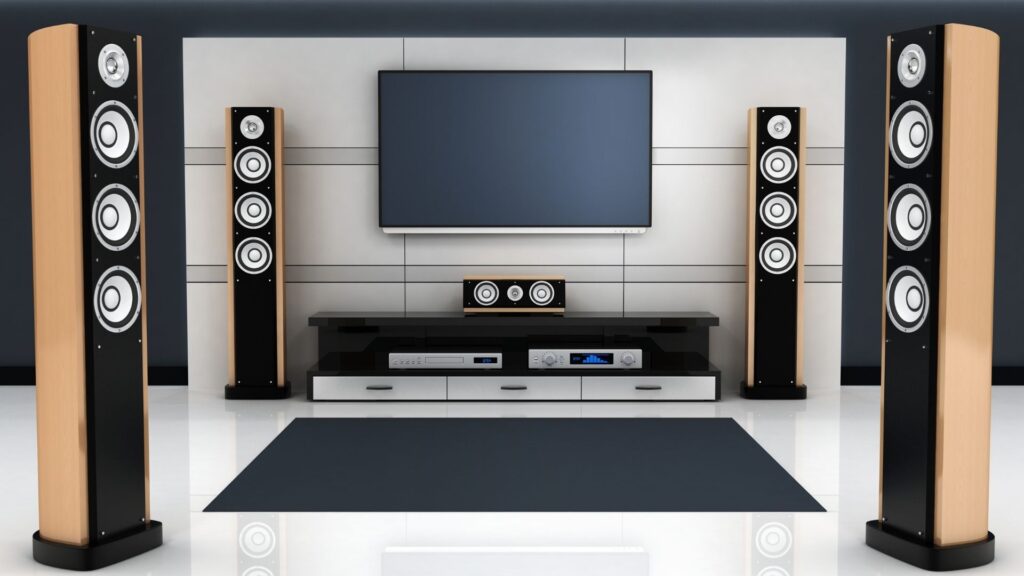
A good sound system for your home cinema doesn’t have to break the bank. Today’s market provides a wide variety of solutions that facilitate setup with minimal effort and expense, such as:
1. Soundbars: Soundbars are a type of loudspeaker that has a broad enclosure to project sound. Soundbars are a novel approach to improving audio quality without adding more devices or complicating installation. They’re designed to be mounted above or below a screen and are substantially broader than they are tall for improved audio quality.
2. Soundbase: Soundbases are an alternative to traditional soundbars in which the TV is placed on top of the base unit. It improves the audio quality of the loudspeakers in your flat-screen TV and gives you a more immersive theater experience by producing a stereo effect from a single cabinet.
3. Home theater in a Box: A standard home theater system consists of a receiver, a center speaker, front left and right speakers, satellite surround speakers, and a powered subwoofer. Different options have unique adaptations, but generally speaking, boxed sets are the most cost-effective and time-efficient method to acquire an entire system.
4. Used or refurbished systems: There are several low-priced options for soundbars, sound bases, and whole home theater systems. You can save even more money by purchasing used machinery or a refurbished computer system. To ensure you are getting high-quality parts, consider purchasing certified reconditioned alternatives.
Seating Options
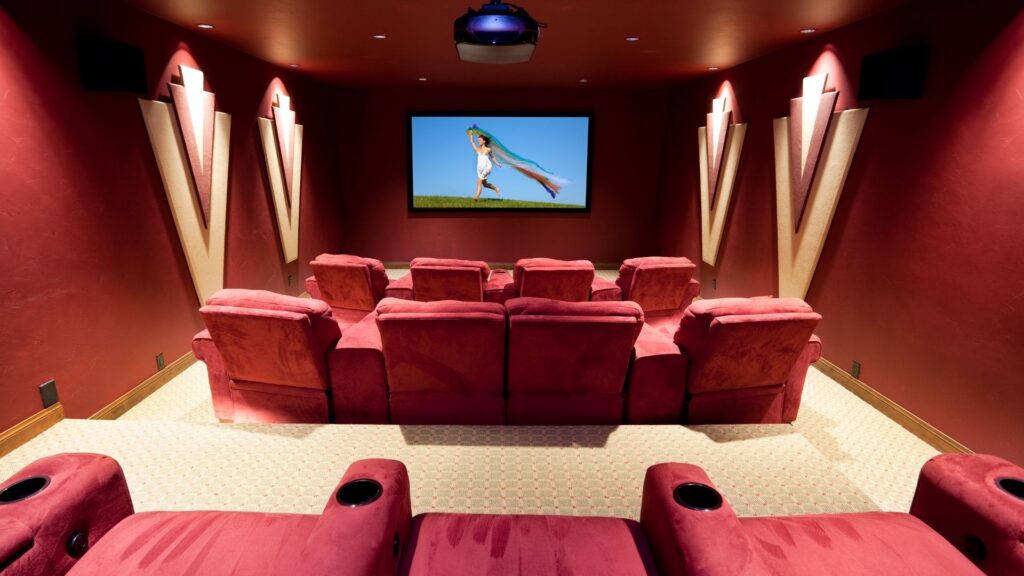
The finishing touch on your home cinema installation is a comfortable seating arrangement. The quality of a home theater viewing experience is greatly enhanced by comfortable seating.
Maximize Your Streaming Options
Having an extensive collection of films and television shows at your fingertips is now easier than ever thanks to streaming services. Streaming services, however, necessitate a powerful setup with sufficient bandwidth to avoid the frustrating endless buffering screen. Here are some things to keep in mind to ensure that your movie theater’s streaming quality remains high.
Internet Speed Is Key
The quality of your streaming media will vary widely depending on your home connection speed. Whenever you watch a movie or TV show online, your device has to download it from the internet before it can display it on the screen. Buffering and poor video quality are two problems that might arise from having a sluggish internet connection. If you’re having trouble streaming or controlling your smart gadgets, your movie marathon might have to be cut short.
If you want to stream videos without interruptions, you should talk to your internet service provider about the optimum configuration for your home. Make sure to position your router in or close to your home theater room for ease of access during setup and troubleshooting.
Creating a Fitting Atmosphere
it’s time to finish off your home theater room now that you’ve decided on a system, found the perfect spot, and connected to your streaming providers. Your home theater may go from mediocre to spectacular with the addition of the correct atmosphere.
Lighting
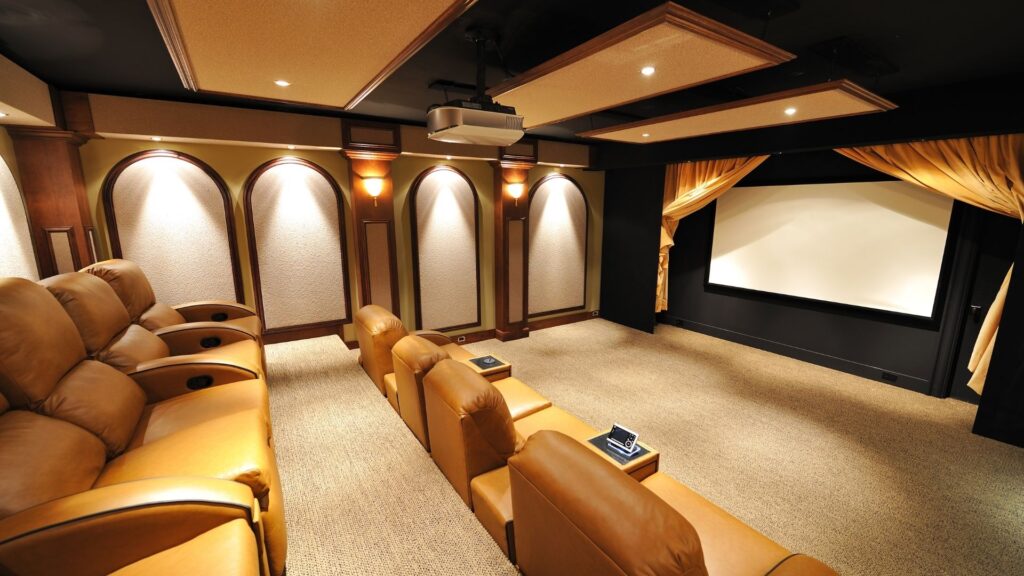
The atmosphere of a home theater can be optimized with well-planned lighting. While you would typically want more natural light in a room, you will want less in a home theater. Whether it’s light from adjacent rooms or sunlight streaming in through the windows, it’s essential to eliminate as much ambient light from the outside as feasible. When light enters a theater, it can cause movies to appear hazy and less defined. Choose a projector with a high lumens rating to ensure a clear image if you cannot control the ambient illumination coming in through doors or windows. Ideally, you should select a room for your home theater in which there are few (or no) windows, such as a basement or a portion of a garage. Use draperies or blinds that block out light to ensure that your theater remains as dark as possible.
DIY Soundproofing
Soundproofing is a crucial but sometimes disregarded part of any home theater setup. It’s possible to soundproof your home at low cost and without much effort or additional equipment.
Manage Cable Clutter
Because of the inescapable abundance of wires and connections in a home cinema setup, cable management should be a priority. Your home theater’s aesthetics will benefit, and you’ll get the most use out of your equipment.
Having a high-quality home theater system doesn’t have to break the bank. Making a home theater that you and your loved ones can relax in while watching movies on a budget is the top priority. Be creative and use what you already have, keep your eyes peeled for bargains wherever you go.